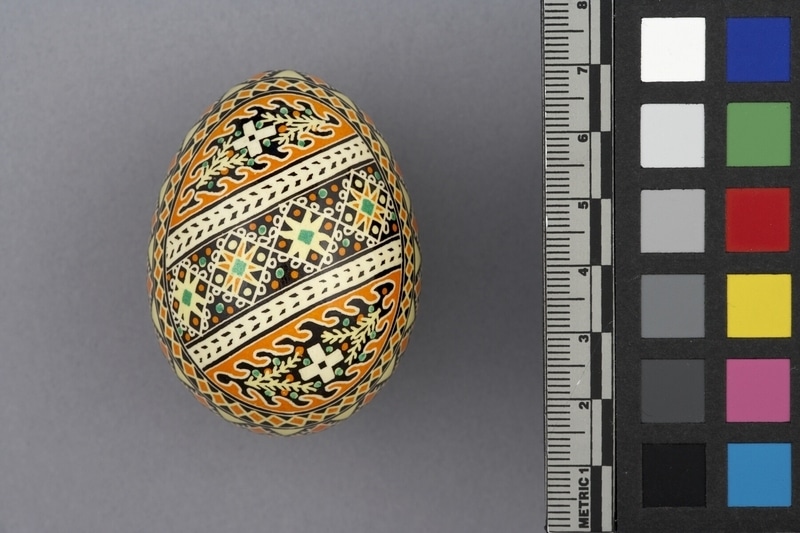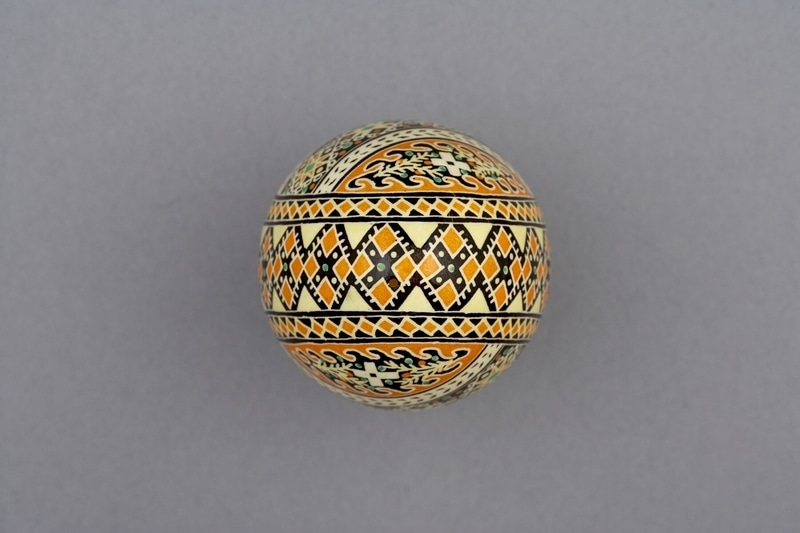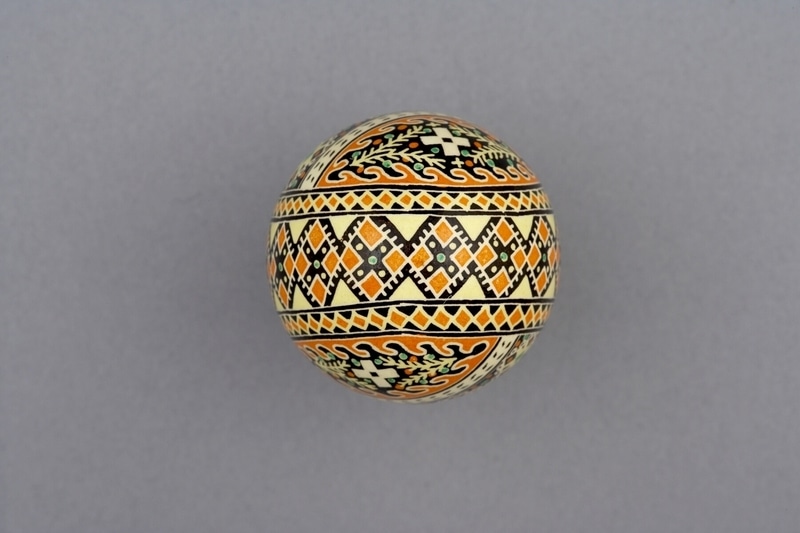Egg Item Number: Ch36 from the MOA: University of British Columbia




Description
Easter egg with black background and intricate yellow, white, orange and green design. On each lengthwise half of the egg is an identical design of traversing diamond chains with floral and star designs. On either side of this band is a scallop-edged floral design, containing a white cross. A longitudinal band of linked diamonds with black crosses encircles the egg. The egg is hollow and fragile. There is a tiny hole in one end.
History Of Use
Pysanka (decorated eggs) are a traditional folk art with pre-Christian roots. Eggs in early times were associated with sun worship, with the yolk representing the sun, and whites the moon. Eggs were used to greet the Spring. Greeting the Spring is still important, however. Easter is their most important association. These eggs are considered benevolent talisman. Children receive light coloured eggs with floral designs. Teenagers are given eggs with blank spaces to represent lives yet to be lived. Married couples receive 40 triangle eggs representing all aspects of their lives together. Older persons are given eggs with black belts, ladders and gates representing heavenly bridges. The eggs are made at night by gatherings of mentally and physically purified women. They are given and exchanged in many contexts.
Narrative
From the Mykhalylo Huculak Hutzulian Folk Art Collection. They are made by resist dying with bees wax applied in various layers and melted off.
Cultural Context
ritual; folk art
Iconographic Meaning
The decorations on pysanka eggs symbolize hope, happiness and protection from evil. When a women is in the process of making the egg, goodness is said to be transferred to the design and to the household. This design is called 'kocuu pacork' ? which means slanting belts.
Item History
- Made in Ukraine before 1978
- Owned by Maria Yasegn before November 2, 1978
- Received from Maria Yasegn (Donor) on November 2, 1978
What
Who
- Culture
- Hutsul
- Previous Owner
- Maria Yasegn
- Received from
- Maria Yasegn (Donor)
Where
- Holding Institution
- MOA: University of British Columbia
- Made in
- Ukraine
When
- Creation Date
- before 1978
- Ownership Date
- before November 2, 1978
- Acquisition Date
- on November 2, 1978
Other
- Condition
- excellent
- Accession Number
- 0493/0019